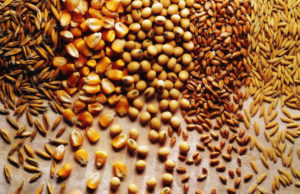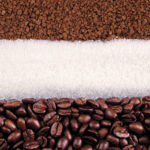 Grain futures advanced on Thursday amid weaker U.S. dollar and concern over drier weather in the Midwest U.S. stressing corn and soybeans crops.
Grain futures advanced on Thursday amid weaker U.S. dollar and concern over drier weather in the Midwest U.S. stressing corn and soybeans crops.
On the Chicago Board of Trade, corn futures for September delivery traded at $5.5988 a bushel at 10:50 GMT, up 1.06% on the day. Prices held in range between days high and low of $5.6013 and $5.5313 per bushel respectively. The grain marked daily gains throughout the week, advancing more than 6.1% so far after it lost nearly 21% during the last two weeks.
DTN reported yesterday that an unfavorable drier and warmer weather trend may develop in the Midwest parts of the U.S. next week, stressing soybeans and corn crops. USDAs last corn crop outlook in June showed an average yield of 156.5 bushels an acre, rebounding from last years 123.4 bushels per acre, damaged by the worst drought since the 1930s. According to a Bloomberg survey among 20 analysts and trading firms, corn output in the U.S. should total 13.983 billion bushels this year, below the previous prediction of 14.005. The U.S. Department of Agriculture will update its production outlook today.
In its weekly crop progress report on Monday, the USDA said that corn silking fell behind last year’s pace. As of the week ending July 7, 6% of the corn crop was silked, slightly above the preceding week’s 3%, but well below last year’s 46% and the five-year average 20%.
As for the corn crop conditions, the USDA reported it is a lot better than 2012. As of July 7, only 8% of the crop was categorized as “Very poor” and “Poor”, 24% was “Fair” and 68% was of “Good” and “Excellent” qualities. In comparison, during the same week last year, 36% of the crop fell in the “Very poor” and “Poor” categories, 30% in “Fair” and 40% was categorized as “Good” and “Excellent”.
The U.S. Department of Agriculture reported last Friday of June that 97.4 million acres of land was sown to corn, the highest since 1936. U.S. Increased production is expected in the U.S., European Union, Ukraine and other former Soviet Union countries.
Wheat advances
Wheat also advanced on Thursday, supported by a weaker dollar and different importers seeking to fill stockpiles, lured by low prices as futures in Chicago fell 29% this year amid ample global supply from the U.S., EU members, Ukraine and other former Soviet Union members. Prices drew support amid concern over crop prospects in Russia, a major wheat exporter that competes with the U.S. on the global market.
Wheat futures for September delivery traded at $6.8500 per bushel at 10:46 GMT, up 0.85% on the day. Prices held in range between $6.8538 and $6.7913 per bushel respectively. The grain is marking a fourth straight day of gains, extending this weeks advance to 3.7% after settling 0.46% higher last week and 5.87% lower the preceding one.
Japan announced earlier in the week it is seeking to buy wheat form the U.S. that is an alternative to Oregon wheat, which was banned several weeks ago following a discovery of an unauthorized gene-altered crop. The strains suspension was extended this week for a six straight one.
Japans Ministry of Agriculture, Forestry and Fisheries said today the Asian country purchased 23,963 metric tons of club wheat grown in Washington state, 1,497 tons of Australian premium-white, 1,710 tons of U.S. soft-red winter and 22,784 tons of western-red-spring wheat from Canada.
Meanwhile, wheat imports from Pakistan, Asia’s third biggest producer, may surge to the highest level in 5 years following a decline in the country’s crop harvest that boosted local prices, making imports more competitive. Abdul Kalim Baakza, senior vice chairman of the Karachi-based Wheat Traders’ Association of Pakistan said for Bloomberg yesterday: “We may import up to 500,000 tons of wheat this year.” Traders have already purchased a total 200 000 tons of wheat from the Black Sea Region this year.
The International Grains Council said last week that global wheat production may rise 4.2% compared to a year earlier and total 683.1 million tons, 1 million more than the previous estimate. The USDA expects global output to surge by 6.1% to 696 million tons.
Soybeans gain as well
Soybeans also gained today, trading at $14.7475 a bushel at 10:58 GMT, up 0.69% on the day. Prices held in range between days high and low of $14.7550 and $14.6163. The oilseed has advanced 3% this week after tumbling around 4% in the preceding two.
Soybeans have been well supported recently as weather forecasting models showed unfavorable weather for crop developing, spurring concern over domestic supply.
U.S. farmers are expected to reap a record amount of soybeans this year. The USDA said in its acreage report in the end of June that the U.S. soybean planted area is estimated at a record high of 77.7 million acres, up 1% compared to last year. Area for harvest, at 76.9 million acres, is up 1% from 2012 and will also be a record high, if realized. Market analysts expect a modest upgrade of USDAs outlook on domestic supplies today.
In its weekly crop progress report, the USDA said that as of July 7 95% of the nation’s soybean crop had emerged, up form the preceding week’s 91%, but below last year’s full emergence and the 97% five-year average.
As for the soybeans condition, the government agency reported it was a lot better than last year’s. This year, 7% of the crop was categorized as “Very poor” and “Poor”, 26% was “Fair” and 67% was “Good” and “Excellent”. As of July 7, 2012, 27% of the crop was of “Very poor” and “Poor” quality, 33% was “Fair” and the remaining 40% was of “Good” and “Excellent” quality.





